American’s love big SUVs and two of the most popular family choices have always been from two American brands – the Ford Explorer and Chevy Traverse. Things are really heating up between these two since Chevy just debuted an all-new (and very big) Traverse just a few months ago, and now, not to be outdone, the Ford Explorer also is just getting a heavy refresh for 2025. So, who wins in a 2025 Ford Explorer vs. 2024 Chevy Traverse showdown? Well let’s go ahead and find out!
Pricing and Equipment
Now we have a ton to cover in this comparison, but first let’s quickly establish the pricing right from the start.
Beginning with the all-new Traverse, we see higher pricing than average in this class to match extra space it has, coming in at $58,090 for this fully loaded RS trim.
Traverse RS AWD: $56,200 | Options: +$495 | Destination: $1,395 | Total: $58,090
The Explorer also has seen a price increase for the refresh to bring its total to just shy of $60,000 for an equivalent top-spec Platinum trim level.
Explorer Platinum AWD: $53,655 | Options: +$4,615 | Destination: $1,595 | Total: $59,865
By the way, if you want to get the best price from local dealerships and access to invoice pricing info for these two models or any vehicle, we have a tool on our website to do just that. Click here for more information!
Exterior Design
As always, we’ll begin with the exteriors where you will certainly notice updated designs for both. The Traverse has gone with a sporty look, enhanced with this RS trim and its large black grille. On the flip side, Explorer Platinum is all about that bling-factor, with a chrome mesh grille and for lighting, both have premium LED projector setups. In addition, the Traverse goes the extra mile and has animation and only the Explorer has LED fog lamps.
Moving to the sides, you’ll see both are big, but the Traverse is the larger of the two by about 5 inches. Our interior space breakdown is coming later in the comparison, but for now, you can see the large 21- and 22-inch alloys on the Explorer and Traverse respectively.
Length: 204.5-inches (Traverse) |198.7-inches (Explorer)
That is too small of a difference for a point, but the Traverse RS will get a score for exclusive gloss black wheel surrounds instead of the matte black ones on the Explorer Platinum shared with lower trims.
I do also want to point out that only the Explorer can technically get a two-tone black roof, but its hefty $5,000 price tag will put it out of reach for 99% of buyers.
Moving to the rear, you’ll notice that both have sporty appearances that are quite like one another. They have full LED taillights, exposed wipers, spoilers and fancy quad-tip exhaust outlets. Towing comes in at the same at 5,000 pounds for both.
Additional Features
Now checking out some of the individual features, both have luxury-car mirrors with heating, blind spot monitoring, auto-dimming and power-folding.
Family SUVs need more than just BSM, and as far as other active safety features these two have you covered with all 4 included as standard equipment on all trims. In addition, both offer hands-free highway driving assistants known as Ford BlueCruise and GM SuperCruise. We’ve had extensive experience with both automakers systems, and SuperCruise system is more advanced in operation, with features such as automatic lane change, and is more reliable in the time engaged.
Lastly, know their warranties are identical besides for complimentary maintenance in the Chevy.
- Explorer: Warranty: Basic Warranty: 3yr/36k mi | Powertrain: 5yr/60k mi | No Comp Maintenance
- Traverse: Warranties: Basic Warranty: 3yr/36k mi | Powertrain: 5yr/60k mi | Complimentary Maintenance: 1st Visit
But the features, luxury and comfort of the cabins are the things that are of foremost importance, so let’s get to that.
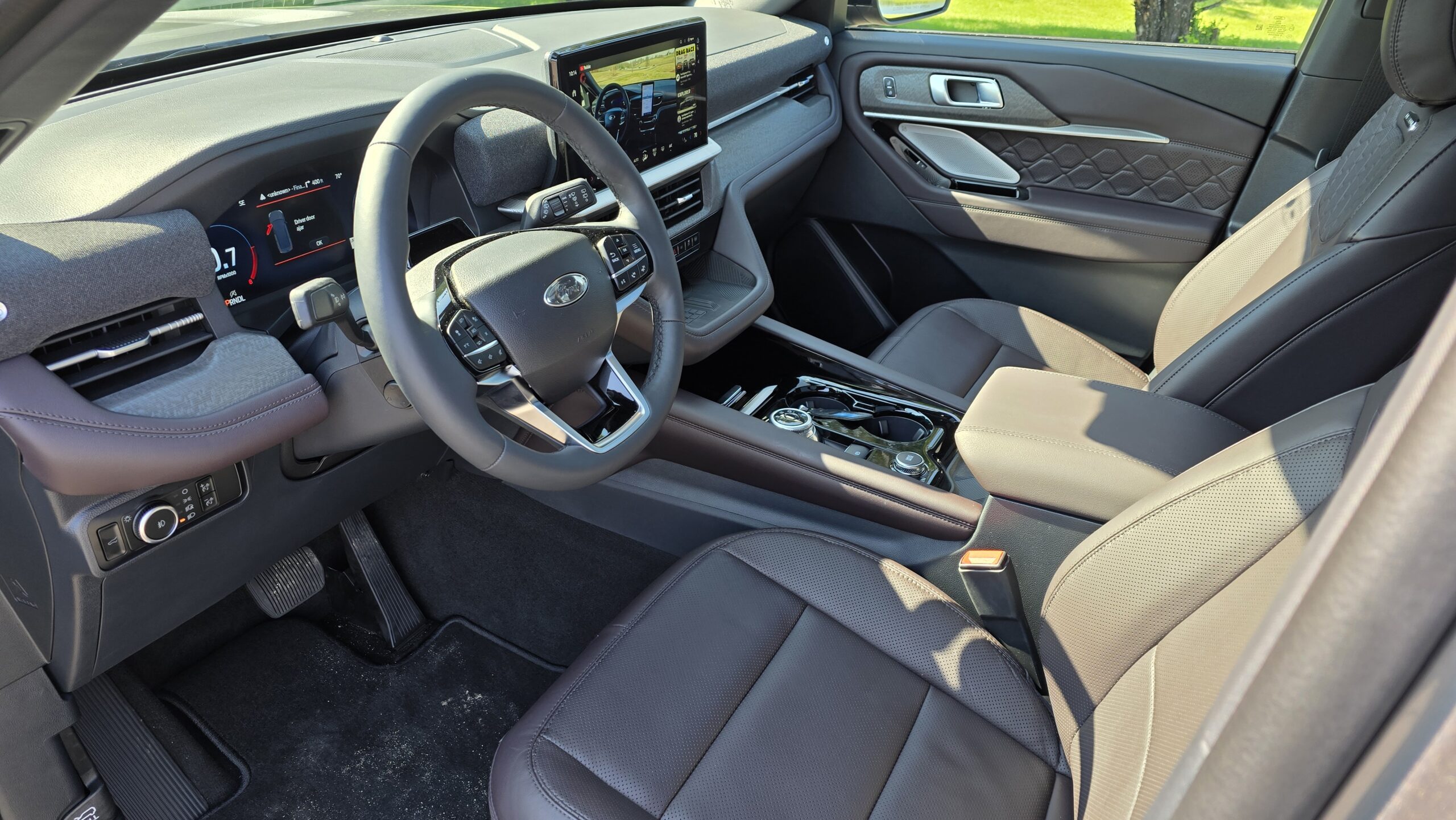
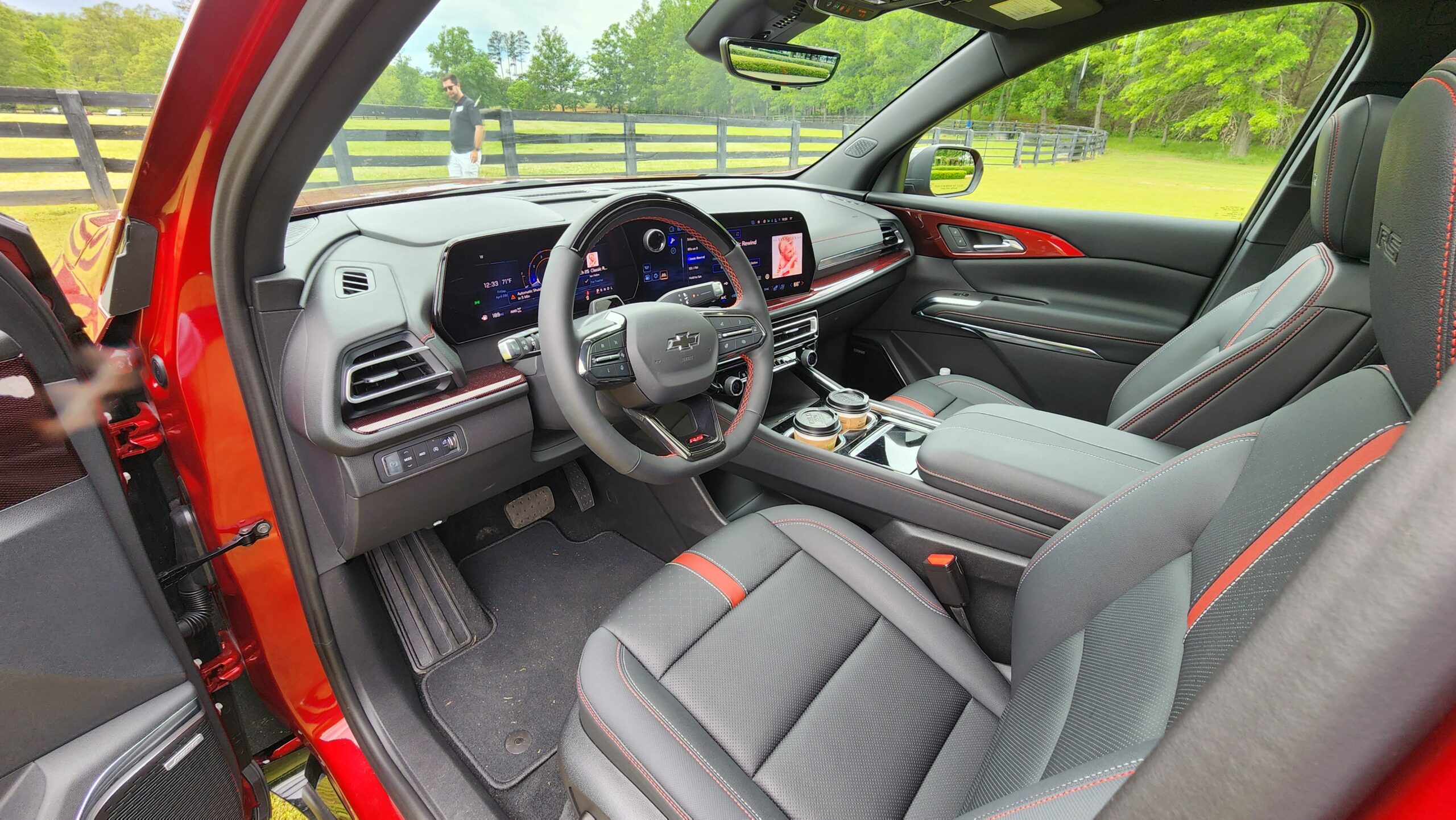
Interior Design
As we walk toward the interiors, both models have smart entry systems with remote start built into the fobs free for life. However, it’s only the Explorer that has sensors behind the handle to unlock.
Once we open up the doors, you’ll immediately see two cabins which are updated with a surprising amount of luxury and impressive technology this year. Before we get into the tech, though, let’s stop at the seats. While the number of adjustments is the same at 12-way power, and both are including heating and ventilation, it’s only the Explorer which has seat massage.
It’s also the Explorer with the more premium “Sanctuary” quilted leather. This is very similar to what you get in a Lincoln, which not only feels nicer than the Traverse, but has more color choices than just a black on Traverse.
They both also have memory functions, and once we fully climb inside, we can get into the major point category of overall material quality. While neither are segment leaders in material quality, the Ford that takes the lead in this regard. For 2025, they’ve refined the materials selection giving you more padded plastics, leather trim and material variety than the Traverse which is more utilitarian than luxurious.
After startup, you’ll see digital gauge clusters on both with fully customizable graphics. It’s 11 inches on the Traverse and 12.3 inches on the Ford which is enough to award it a half point.
Just note, head up displays are not offered on either.
Now moving back to the leather-wrapped steering wheels, both have nice feels in the hand to go along with heating and power tilt and telescoping.
Storage and Technology
Now let’s talk about overall interior storage, which is a huge area that both SUVs excel. The main center consoles are massive, fitting 17 and 14 donuts in the Traverse and Explorer respectively. They also have extra cubbies up front, with wireless chargers, and only the Traverse has a center pass through. Overall, the Traverse wins in this major category.
Donuts:
- Explorer: 14
- Traverse: 17
Moving on to the shifters, to maximize space both are using electronic setups; the Ford’s a rotary style and the Chevy a column mounted. When you use the shifters to engage reverse, both SUVs are remarkably including 360 cameras as standard on either ALL or MOST of the trim levels this year.
Moving on, both have 3 zone automatic setups that can be controlled in the screen or via knobs for the Chevy.
We also have physical volume knobs to control their premium systems. The Explorer’s system sounds more premium with rich audio quality, plus it has a 4-speaker advantage and metal speaker grilles.
Traverse: 10-speaker Bose Premium Audio
Explorer: 14-speaker B&O system
So thus far you’ve seen the Explorer has a more luxurious interior than the Traverse, but an advantage in the Chevy’s favor is the main infotainment screen. It has an absolutely massive 17.7-inch screen compared to 13.2 inches on the Ford, and both have the latest and greatest software with Google built in. That means you’ll have access to Google Maps natively, wireless Android Auto and Apple CarPlay abilities, and both systems run smoothly even with impressive graphics.
Last but certainly not least for the front of the interiors, both models have auto-dimming mirrors but only the Traverse has rear camera ability.
Both also feature nice large panoramic sunroofs as equipped.
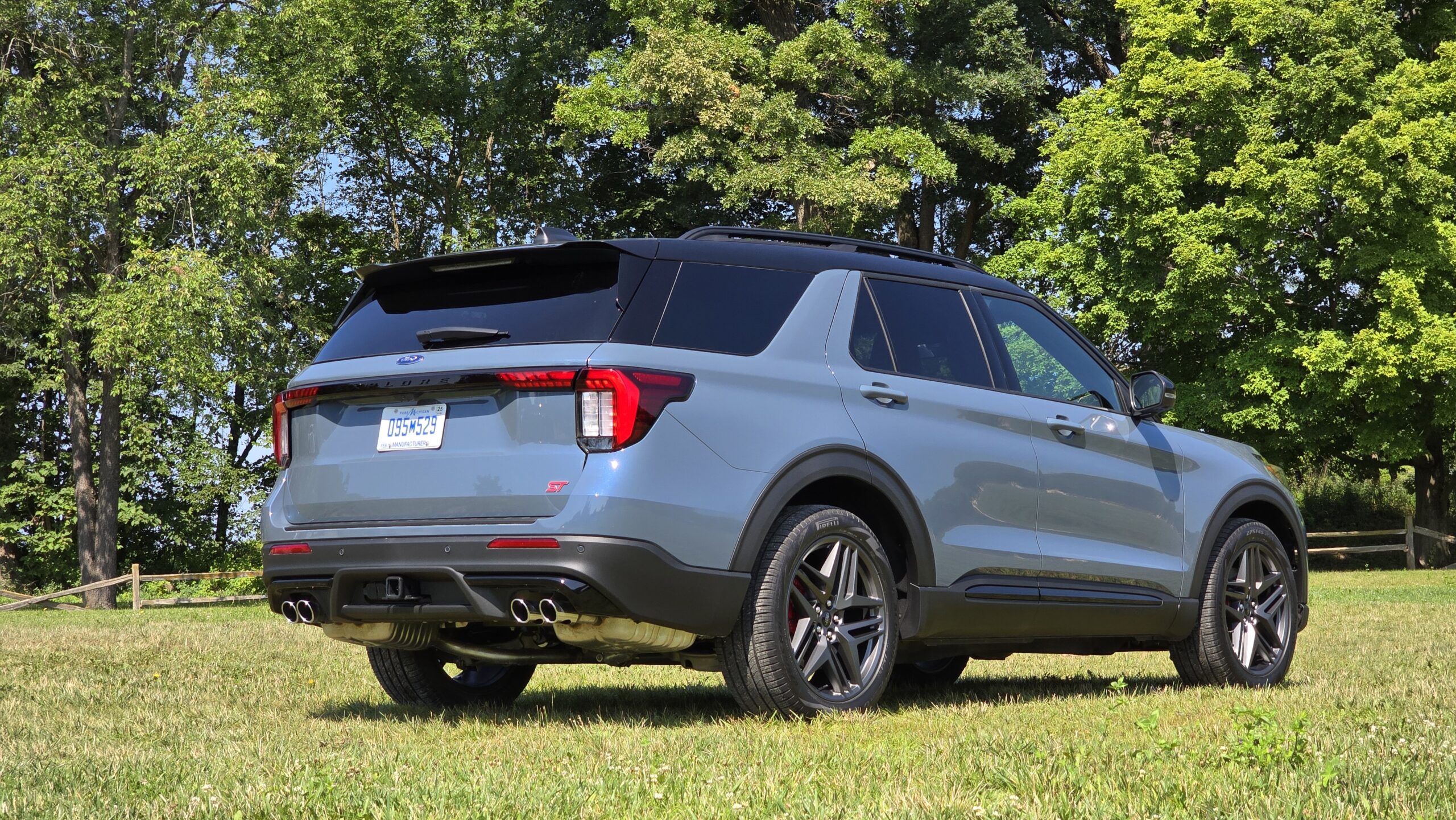
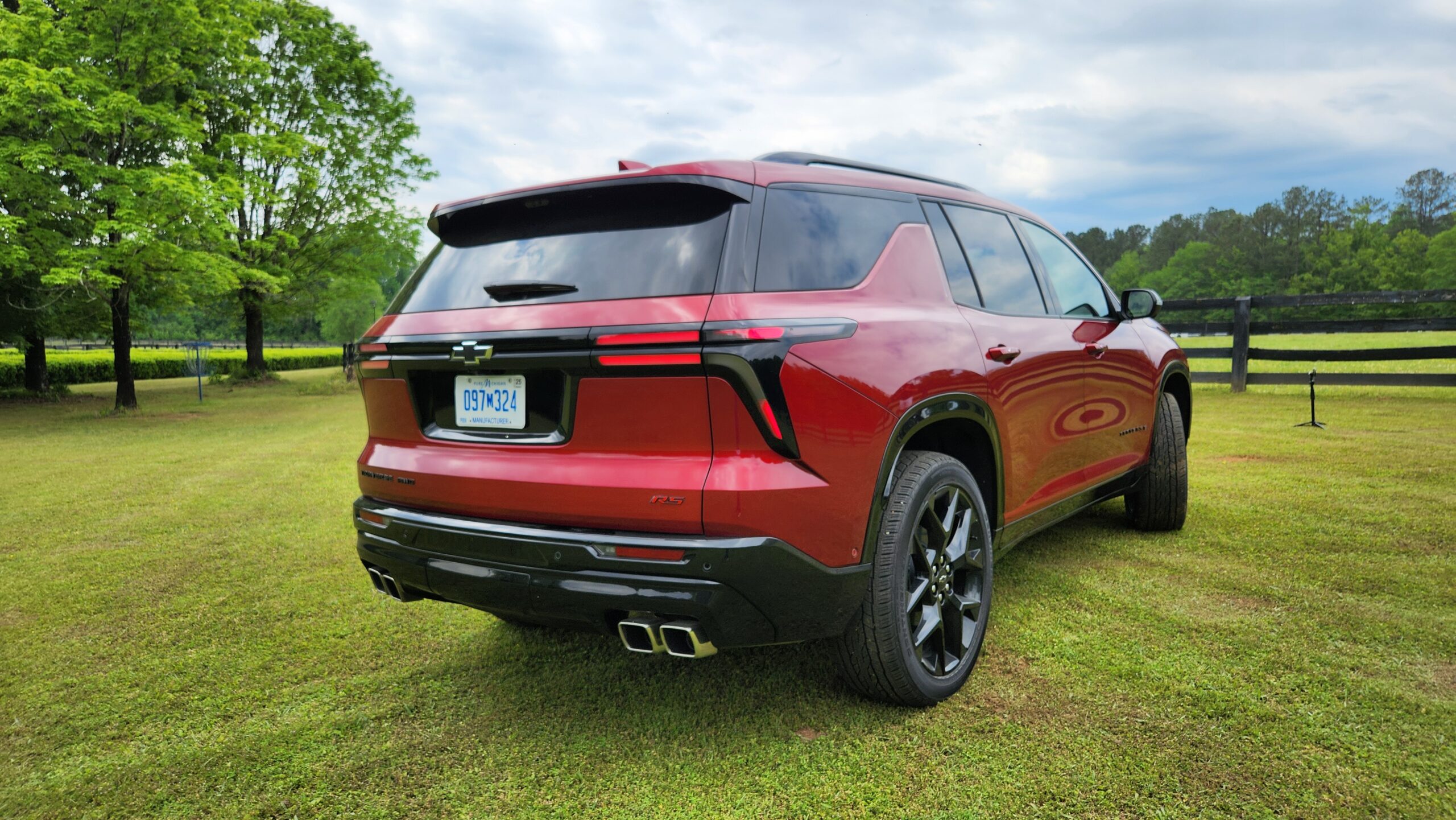
Rear Seats and Cargo
But now let’s move into the rear spaces because this is probably the reason you are interested in these SUVs anyway. Now if you remember, the Traverse is about 5 inches longer which means it shouldn’t be surprising it has about 8% more rear legroom and 4% more headroom which isn’t quite the 5% required for a point.
- Explorer: 3-inches of legroom| 38.2 of headroom
- TR: Legroom: 41.5-inches | Headroom: 39.9-inches
Regardless, the features list is largely the same. There are rear climate controls, vents, 2 USB ports, household power outlets and heated rear seats. Both also have the captain chair seating arrangement, but only the Explorer has rear window sunshades.
Let’s head to the next row of seats. As far as access to the third row, both have sliding mechanisms to make that simple, but the Traverse’s seat tilts forward so that car seats can remain installed.
As far as space and comfort are concerned, they have the same impressive figures, but the Traverse has the real world advantage. Headroom and legroom are nice, even for adults, but the Explorer’s seats are mounted close to the floor making for very little thigh support. We have vents and USB connections too, but if you want 8-passenger seating you will have to choose the Traverse since the Explorer only has two third row seats.
- Explorer: Legroom: 32.2-in | Headroom: 38.9-in
- Traverse: Legroom: 32.2-in | Headroom: 38.2-in
After popping open the hands-free power tailgates, we have even more differences. The Traverse set out to be the class-leader in space this year, and indeed it does have an approximate 20% advantage in all 3 seating configurations over the Explorer. The Explorer is still spacious but the Traverse is as large as it gets in this class.
Explorer: Behind 3rd Row: 16.3 cu.ft | Behind 2nd row: 46.0 cu. ft. | 2nd row folded: 85.3 cubic feet
TR: Behind 3rd Row: 22.9-cu.ft | 2nd Row: 56.6-cu.ft | MAX: 97.6-cu.ft
But what about features? Both include power folding ability for the third rows, and only the Traverse includes buttons to fold the second row electronically.
Alright, that’s it for the interiors, so now let’s take this family fight to the streets!
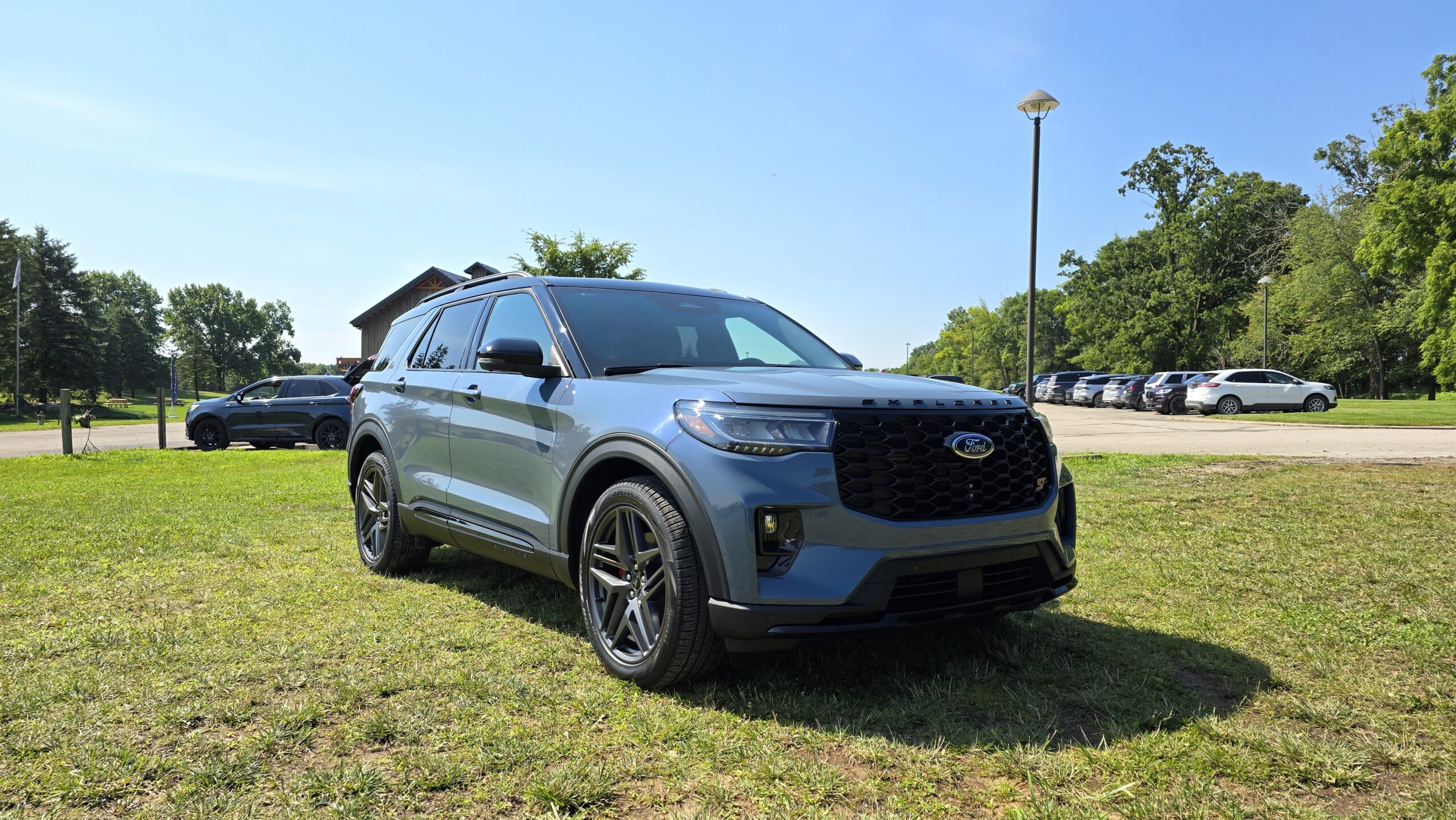
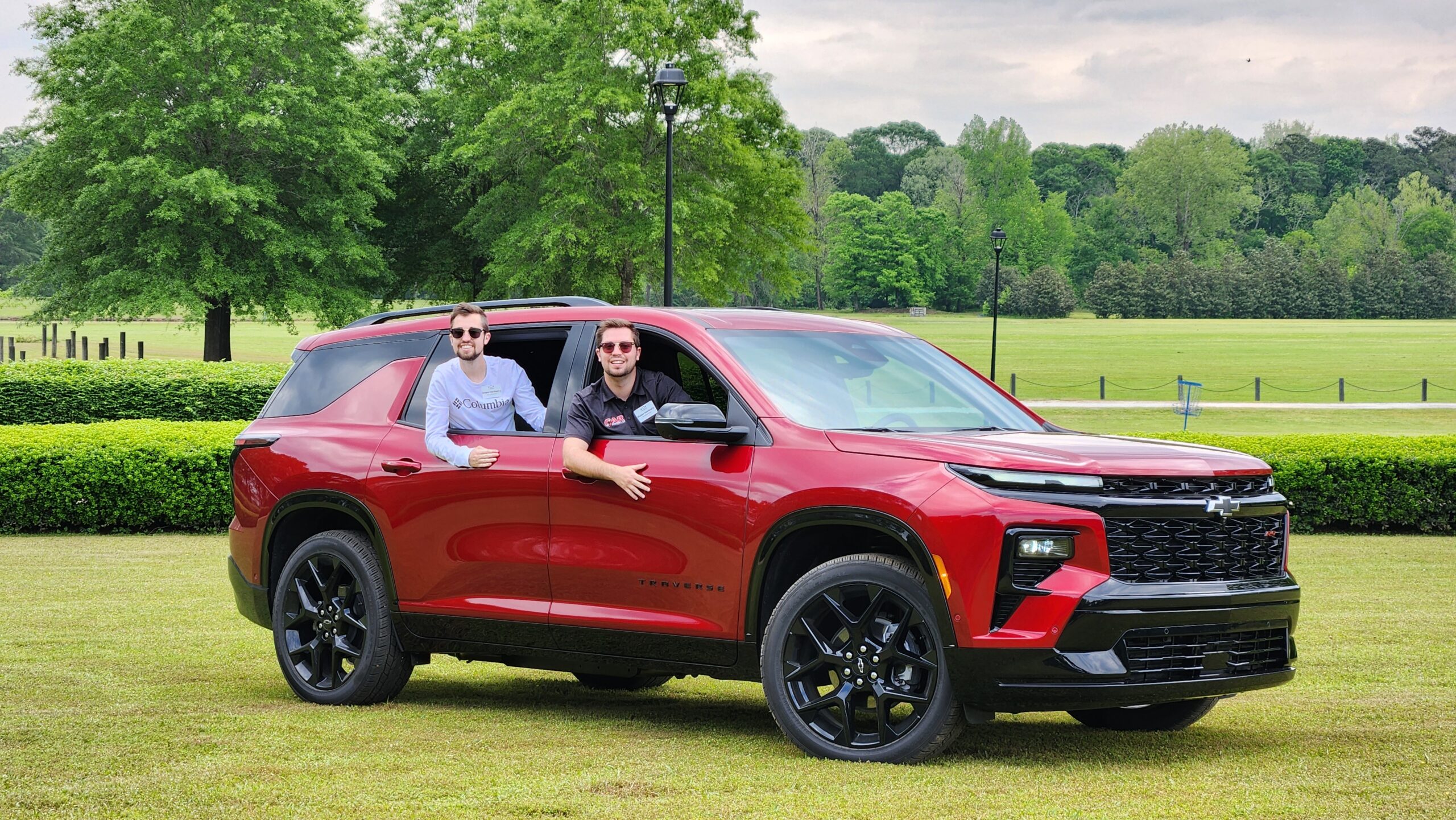
Powertrains
These two have fought back and forth relentlessly, and under the hoods, that trend will continue with completely different powertrain setups. The Traverse goes for a simplified structure with a 2.5L Turbocharged 4-cylinder only with 328 hp and 326 lb.ft of torque. Explorer also has a turbo 4-cylinder engine as standard, but at this nearly-$60,000 price point, you get the upgraded 3.0L Twin-Turbo V-6 making significantly more power at 400hp and 415 lb. ft. of torque. As expected, that is a huge Explorer-advantage for the same money.
- Traverse: 2.5L Turbo I-4: 328 hp | 326 lb.ft
- Explorer: 3.0L Twin-Turbo V6: 400 hp | 415 lb.ft
Past the quick accelerations on both, let’s talk transmissions. The Traverse and Explorer will come with 8 and 10-speed automatics respectively which perform smoothly and without hesitation. As equipped, we also have AWD systems for added peace of mind.
Test Drive and Fuel Economy
But it’s not all about speed since comfort is extremely important for family crossovers. I’ll preface by saying both rides fairly-nicely even despite the large 21- and 22-inch wheels as equipped. However softer and cushier ride qualities can be found in other options within the segment or by opting for smaller wheel choices.
Normally we wouldn’t talk about driving dynamics in a 3-row comparison, but in this case the Ford pulls ahead thanks to its rear-drive architecture and pleasant steering feel.
But it wouldn’t be a Car Confections comparison if we didn’t talk about the noise levels in the cabins. We took samples of both at 55MPH; however, they were conducted in different states on the media drives. Because of this, these are unofficial and unscorable figures, but still note that they came in within 1 dB of each other for reference.
Explorer: 57.0 dB @ 55 MPH
Traverse: 57.7 dB @ 55 MPH
And the last on-the-road item to discuss is fuel economy. You might expect the Explorer’s V6 to come in significantly worse than the Traverse’s 4-cylinder, but you’d be wrong. They come in identical at 21 MPG combined, which is super surprising and worth remembering! Be aware you cannot get hybrids on either model.
- Explorer V6 AWD: 18/25/21 MPG
- Traverse AWD: 19/24/21 MPG
Resale and Reliability
In our reviews and comparisons, we are also adding in reliability and resale information to give you a better picture of the overall value beyond just the original MSRP.
Beginning with reliability, we developed the Combined Reliability Index, which takes into account several studies from trustworthy sources, and combines them in a way that gives a more realistic picture. In this respect, these two are quite different: Ford slots 5 spots BELOW industry average, meanwhile Chevy has the second highest ranking at 15 slots above average.
We also put Mason’s economics degree to work to develop a detailed Predicted Resale Value tool. After 5 years and 60,000 miles, the same thing plays out with the Ford Explorer coming in a bit less, retaining an estimated 48.8% of original MSRP and the Chevy 54.71%. That’s a 6% difference.
Resale is obviously important because it determines how much money you get back, but we can’t forget about the price difference at the original purchase. The Explorer rings in $1,775 more expensive than the Chevy.
I want to emphasize that if money, reliability or resale value matter less to you personally, feel free to disregard these points. And if you’d like to check out all our data about reliability and resale values, as well as learn about our methodology, make sure to head to www.carconfections.com/resale and www.carconfections.com/reliability. Buying a car is a big decision, and this is a great place to compare all the makes you might be cross-shopping.
2025 Ford Explorer vs. 2024 Chevy Traverse winner!
So that’s it for another exciting comparison, this time between two American family kings! Let’s quickly recap here and discuss who should be “your” personal winner.
Traverse:
- Bigger cargo capacity and third row
- Storage in front of cabin
- SuperCruise – better than BlueCruise
Explorer:
- That luxury experience inside cabin (massaging seats, B&O audio)
- V6 refinement and power – still same fuel economy
- Drive experience
Now we want to know your opinions, so make sure to head to the comment section and let us know which one you would pick!
Thanks for joining us for another Car Confections Comparison! We’ll catch you next time as we sample the latest automotive delicacies!

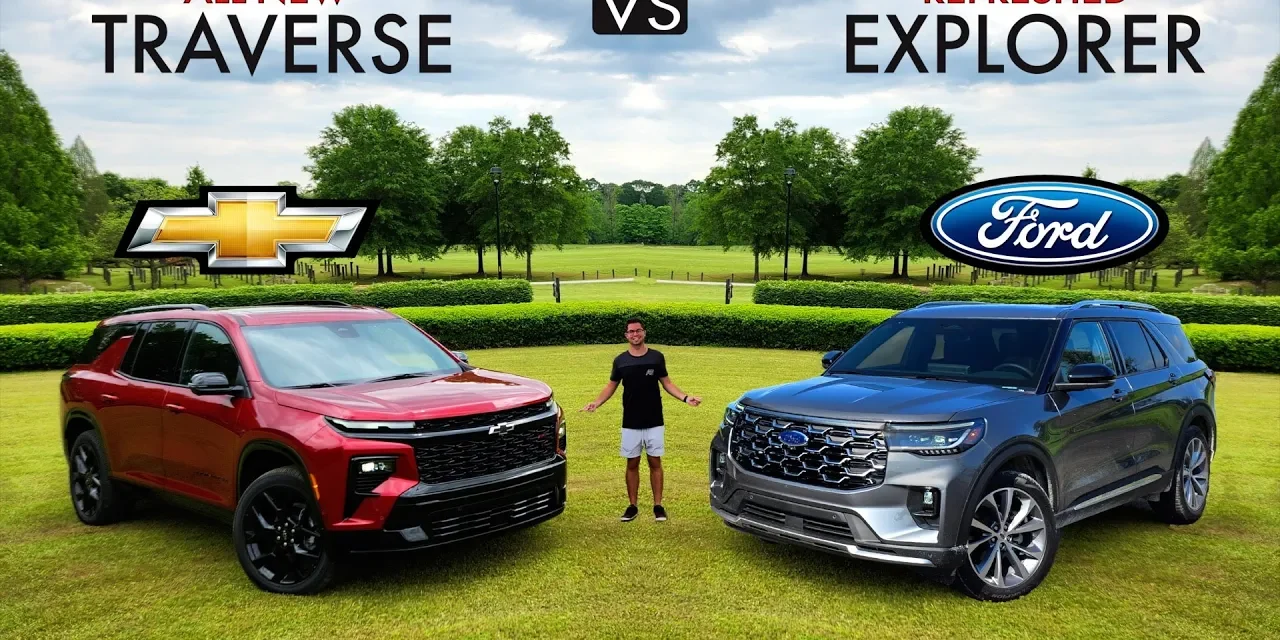
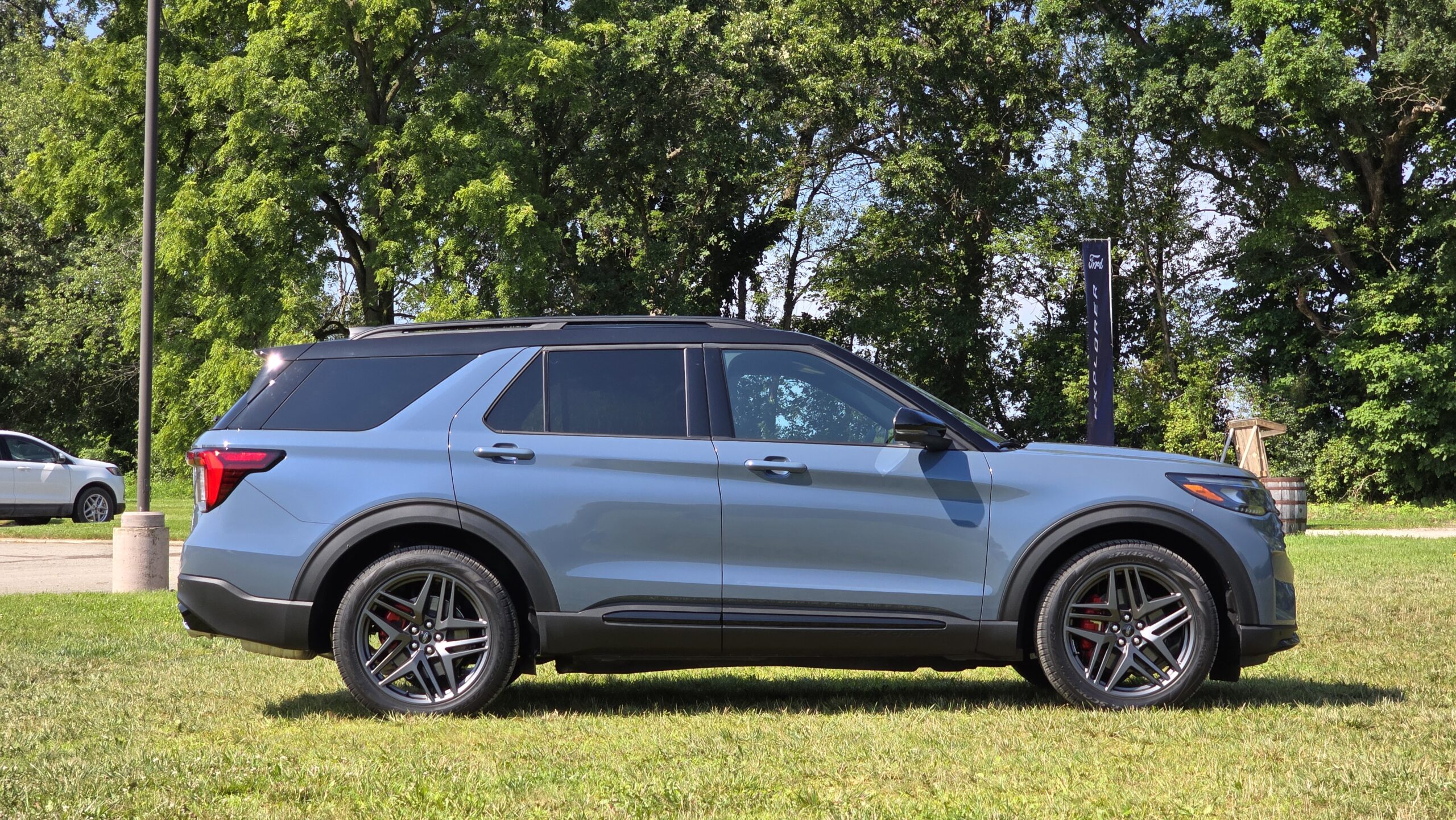
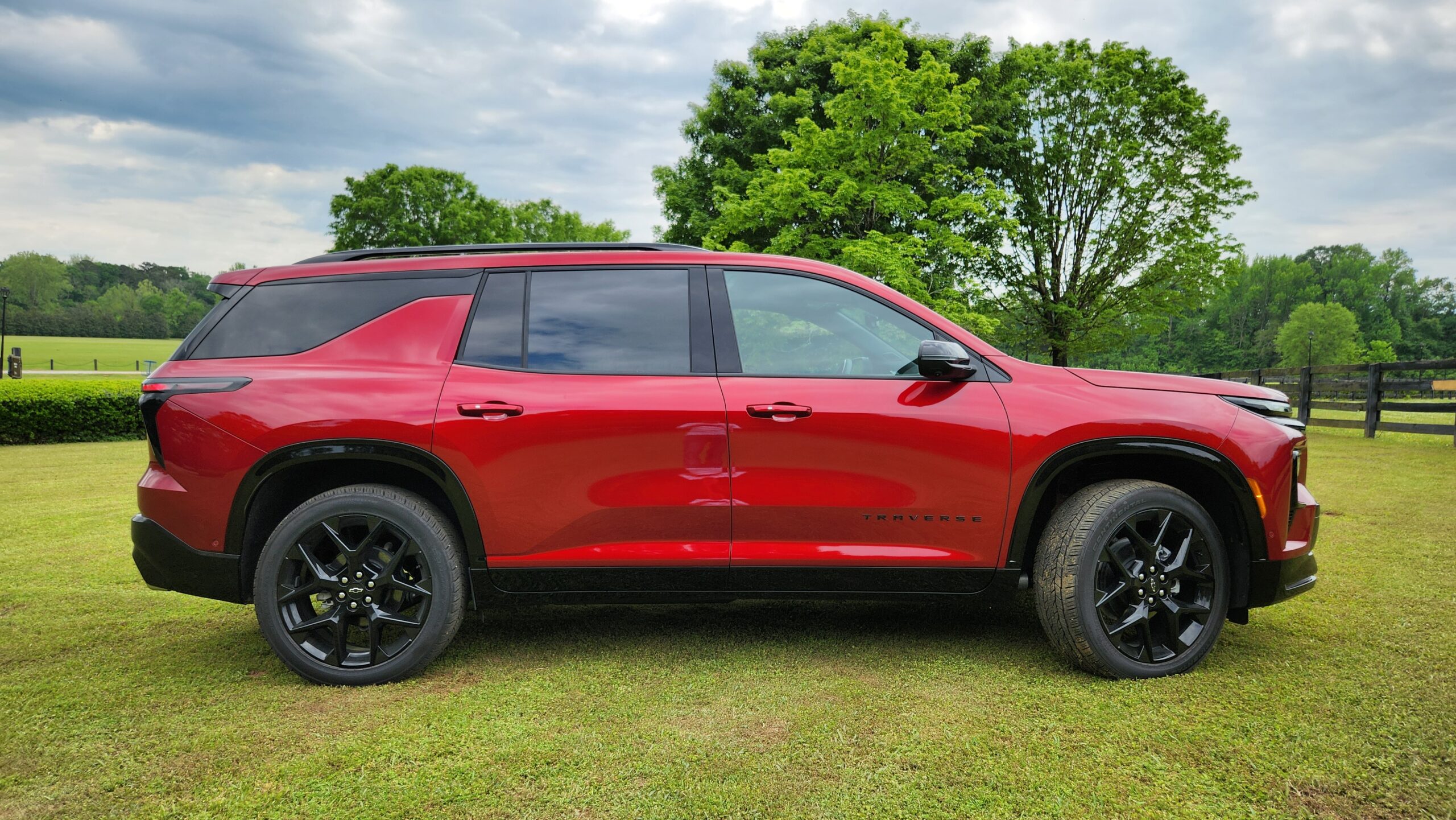

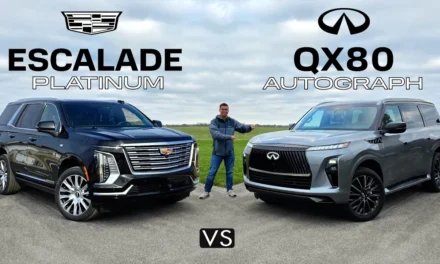

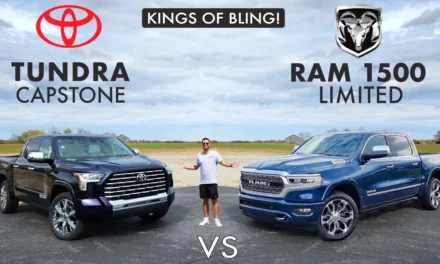






Recent Comments